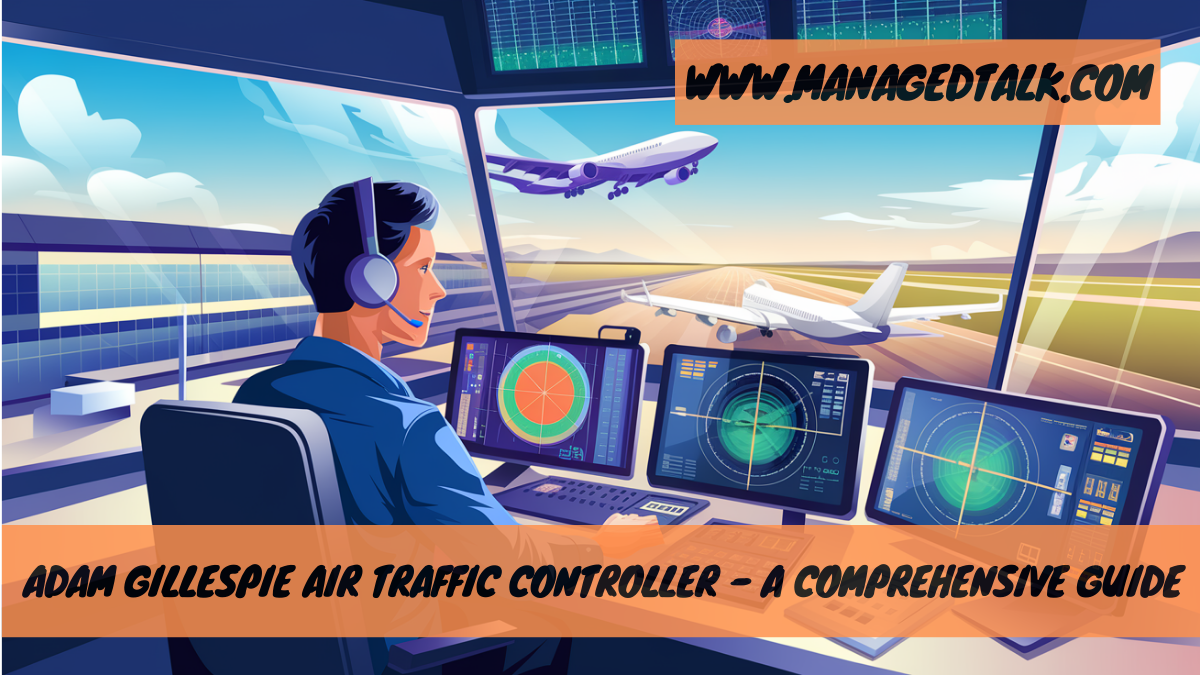Introduction
Air traffic control is one of the most critical roles in aviation, ensuring that the skies remain safe for millions of passengers daily. Among the dedicated professionals in this field is Adam Gillespie, a skilled air traffic controller known for his expertise in managing complex flight operations.
Adam Gillespie is a skilled air traffic controller ensuring safe and efficient plane takeoffs and landings, vital for maintaining air travel safety and coordination.
This article delves into Gillespie’s contributions, the responsibilities of an air traffic controller, and why their work is indispensable to modern aviation. By exploring this field, we’ll uncover what makes Adam Gillespie a standout figure in air traffic control.
1. Who is Adam Gillespie?
Adam Gillespie is a qualified and experienced air traffic controller who plays a pivotal role in ensuring safe and efficient air travel. With a deep understanding of aviation systems and an unwavering commitment to safety, Gillespie is responsible for coordinating the movement of aircraft both on the ground and in the airspace.
His expertise includes:
- Monitoring radar systems to track aircraft.
- Communicating with pilots to provide directions.
- Managing emergency situations with precision and composure.
Adam Gillespie’s professionalism has made him a respected name in the aviation industry, representing the dedication required to excel in this demanding field.
2. The Role of an Air Traffic Controller
Air traffic controllers like Adam Gillespie are tasked with managing air traffic to ensure safety and efficiency. Their duties span a wide range of responsibilities:
- Takeoff and Landing Coordination: Ensuring planes take off and land without interference or collisions.
- Airspace Management: Directing aircraft to avoid congested airspace and potential hazards.
- Weather Monitoring: Providing real-time updates on weather conditions to pilots.
- Emergency Handling: Assisting with in-flight emergencies, rerouting planes, or grounding flights when necessary.
Types of Air Traffic Controllers
- Tower Controllers: Manage aircraft on the runway and during takeoff/landing.
- Area Controllers: Supervise en-route flights at high altitudes.
- Approach Controllers: Coordinate flights as they enter or exit a terminal’s airspace.
Each of these roles requires high levels of concentration, quick decision-making, and collaboration with aviation teams worldwide.
3. Adam Gillespie’s Journey in Air Traffic Control
Adam Gillespie’s career reflects years of rigorous training, hands-on experience, and a passion for aviation safety. His journey began with specialized education in air traffic management, followed by certifications from regulatory authorities.
Highlights of Gillespie’s Career:
- Safety Advocacy: Known for implementing practices that minimize risks in congested airspace.
- Mentorship: Guiding aspiring air traffic controllers by sharing insights and best practices.
- Adaptability: Managing high-pressure scenarios, such as rerouting flights during extreme weather or emergencies.
Gillespie’s dedication exemplifies the qualities needed to excel in air traffic control.
4. Skills and Qualifications Required
Becoming an air traffic controller like Adam Gillespie involves mastering several technical and interpersonal skills:
Essential Skills:
- Attention to Detail: Precision is crucial when managing aircraft routes and timing.
- Multitasking: Simultaneously monitoring radar, communicating with pilots, and analyzing weather data.
- Calmness Under Pressure: Remaining composed during emergencies or system failures.
- Strong Communication: Clear and concise communication with pilots and ground staff.
Educational Requirements:
- A degree in aviation or air traffic management.
- Certification from an accredited training program.
- Proficiency in technology and radar systems.
Licensing:
Controllers must pass rigorous exams and meet medical fitness standards to maintain their licenses.
5. Challenges Faced by Air Traffic Controllers
The role of an air traffic controller is demanding, with challenges that test even the most experienced professionals like Adam Gillespie.
Key Challenges:
- Stress Levels: Managing hundreds of flights daily in a high-stakes environment.
- Long Hours: Working irregular shifts, including nights and weekends.
- Technological Dependence: Adapting to ever-evolving radar and communication systems.
- Safety Concerns: Navigating complex airspaces without compromising safety.
Despite these challenges, professionals like Adam Gillespie thrive by maintaining focus, discipline, and a commitment to excellence.
6. The Impact of Air Traffic Control on Aviation
Without air traffic controllers, the aviation industry would face chaos. Controllers play a crucial role in:
- Enhancing Safety: Preventing collisions and ensuring smooth traffic flow.
- Reducing Delays: Coordinating efficient routes to save time and fuel.
- Emergency Response: Providing immediate support during crises.
The contributions of individuals like Adam Gillespie ensure that air travel remains one of the safest modes of transportation.
7. Technological Advances in Air Traffic Management
The aviation industry is undergoing a transformation with new technologies improving efficiency and safety.
Innovations in Air Traffic Control:
- Next-Generation Radar Systems: Offering precise tracking and better coverage.
- Artificial Intelligence (AI): Assisting in decision-making and predictive analysis.
- Digital Communication: Replacing traditional radio systems for faster, clearer interactions.
- Data Integration: Providing controllers with real-time updates on weather, traffic, and emergencies.
These advancements empower controllers like Adam Gillespie to handle their responsibilities more effectively.
8. FAQs About Adam Gillespie and Air Traffic Control
1. What does an air traffic controller do?
An air traffic controller ensures the safe and efficient movement of aircraft on the ground and in the airspace.
2. How did Adam Gillespie become an air traffic controller?
Adam Gillespie trained in air traffic management, obtained certifications, and gained years of experience in aviation safety.
3. What are the challenges faced by air traffic controllers?
Controllers face high stress, long hours, and the need to adapt to constantly evolving technology.
4. What makes Adam Gillespie stand out?
Gillespie’s expertise, dedication to safety, and ability to manage emergencies effectively set him apart in the aviation industry.
Conclusion
Adam Gillespie exemplifies the critical role air traffic controllers play in ensuring the safety and efficiency of air travel. His journey underscores the dedication, skills, and resilience required to excel in this field. As technology evolves, professionals like Gillespie will continue to lead the way, keeping our skies safe for generations to come. Whether you’re an aspiring air traffic controller or simply curious about aviation, Adam Gillespie’s story offers inspiration and insight into this fascinating career.
